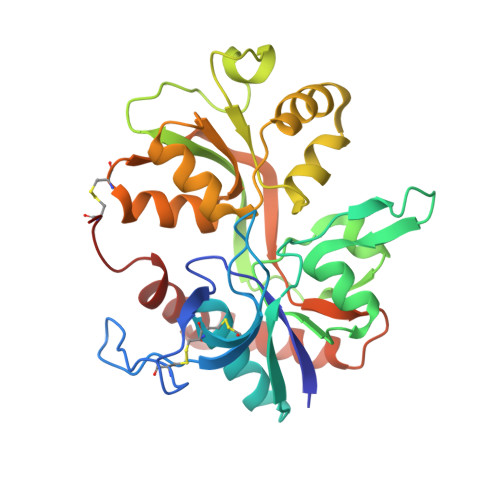Mechanism of Partial Agonist Action at the NR1 Subunit of NMDA Receptors.
Inanobe, A., Furukawa, H., Gouaux, E.(2005) Neuron 47: 71-84
- PubMed: 15996549
- DOI: https://doi.org/10.1016/j.neuron.2005.05.022
- Primary Citation of Related Structures:
1Y1M, 1Y1Z, 1Y20 - PubMed Abstract:
Partial agonists produce submaximal activation of ligand-gated ion channels. To address the question of partial agonist action at the NR1 subunit of the NMDA receptor, we performed crystallographic and electrophysiological studies with 1-aminocyclopropane-1-carboxylic acid (ACPC), 1-aminocyclobutane-1-carboxylic acid (ACBC), and 1-aminocyclopentane-1-carboxylic acid (cycloleucine), three compounds with incrementally larger carbocyclic rings. Whereas ACPC and ACBC partially activate the NMDA receptor by 80% and 42%, respectively, their cocrystal structures of the NR1 ligand binding core show the same degree of domain closure as found in the complex with glycine, a full agonist, illustrating that the NR1 subunit provides a new paradigm for partial agonist action that is distinct from that of the evolutionarily related GluR2, AMPA-sensitive receptor. Cycloleucine behaves as an antagonist and stabilizes an open-cleft conformation. The NR1-cycloleucine complex forms a dimer that is similar to the GluR2 dimer, thereby suggesting a conserved mode of subunit-subunit interaction in AMPA and NMDA receptors.
Organizational Affiliation:
Department of Biochemistry and Molecular Biophysics, Columbia University, 650 West 168th Street, New York, NY 10032, USA.



















